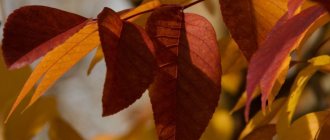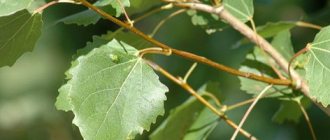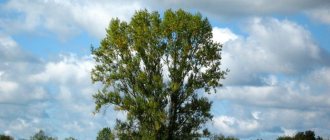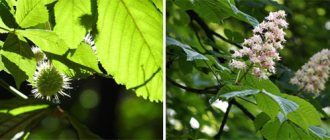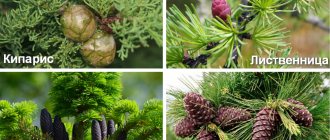Common hazel is a widespread nut-bearing shrub that belongs to the hazel genus (Corylus) of the hazel subfamily (Coryloideae) of the birch family (Betulaceae).
Fruits are a valuable food product, rich in vitamins and other biologically active substances. Hazel nuts are consumed fresh, dried, roasted (roasted nuts). Used in the preparation of various confectionery products (cakes, pastries, creams, fillings, etc.). It is added in the form of flour when baking, including baked goods. Roasted nuts are used as a coffee substitute.
In the confectionery industry, common hazel fruits are a raw material for the production of halva, sweets, chocolate, etc. In distilleries they are used in the production of liqueurs.
The nuts are used to produce fatty oil with a pleasant taste and aroma, which is not inferior in properties to almond oil. It is used both in the food industry and in perfumery and cosmetology for the production of creams, lipsticks, soaps, etc.
In addition, traditional medicine uses common hazel to treat a wide range of diseases. Plant preparations are recommended for diseases of blood vessels, respiratory organs, liver, kidneys, nervous system, etc. Common hazel is also used as a general strengthening and tonic.
The plant is a honey plant. Common hazel pollen has high qualities, is rich in proteins and vitamins, and is used in folk medicine.
In addition, as an ornamental plant, common hazel has found application in landscape design, including it looks good in hedges. It is also planted in shelterbelts and to strengthen slopes, ravines, and slopes.
Types and varieties
The genus hazel, in addition to common hazel, consists of 16 species, including:
- Colchis hazel – Corylus colchica Albov;
- tree hazel (Turkish, bear), bear nut – Corylus colurna;
- horned hazel – Corylus cornuta;
- variegated hazel (Asian), variegated hazel – Corylus heterophylla Ex Bess.;
- large hazel (Lombard nut) – Corylus maxima;
- Georgian hazel – Corylus iberica Ex Kem.-Nath.;
- Manchurian hazel – Corylus manshurica;
- Pontian hazel – Corylus pontica Koch and others.
The fruits of some of them, for example, Manchurian hazel, tree hazel, and large hazel, are also edible and can be eaten.
The common hazel species is divided into several varieties:
- Corylus avellana var. avellana.;
- Corylus avellana var. Pontica (Koch) HJPWinkl. – sometimes distinguished as a separate species.
Numerous cultivated varieties of common hazel have been developed, both edible and ornamental. For medicinal purposes, it is better to use food varieties, since when creating varieties of decorative hazel, more attention is paid to external characteristics to the detriment of the beneficial and medicinal properties of the plant.
Common hazel. Latin name : Corylus avellana L.
Common hazel. Other names : hazelnut, hazelnut, hazelnut.
What is hazelnut and where does it grow?
Hazelnut, or hazel, belongs to the Berezov family and grows in the Caucasus, Belarus, the Far East, the Baltic states and Central Russia.
The height of a hazel bush can reach up to seven meters. Many people think that hazelnuts are the same as hazelnuts, but this is not true. Hazel, or hazelnut, is a wild shrub. Hazelnuts are a selectively selected, high-yielding species. Hazelnut fruits are larger and higher in calories than hazel fruits.
In Russia, a cultivated variety of hazelnut with high yield and larger fruits was bred at the beginning of the twentieth century by I.V. Michurin.
In other countries and regions, hazelnuts were known as an agricultural crop much earlier. For example, in the Caucasian lands, hazelnuts were specially grown as a separate crop many centuries ago.
Botanical description
Common hazel is a woody shrub, less commonly a tree. Height of common hazel: 3-5, up to 8 m. The root system is not deep from the surface, powerful. It consists of the taproot of common hazel and powerful lateral knotty roots, one of which is larger and longer.
The trunks are branching and covered with characteristic white lentils. The bark is smooth, striated, color: brown, brownish-gray. Young shoots are bare and gray. Annuals - covered with hairs or bristles and glands, bark color: yellowish, brownish-gray. The crown is ovoid or flat-spherical.
The buds are lagging, round or ovoid, slightly compressed on the sides. Covered with rounded bare or finely pubescent scales, ciliated along the edges. Length: up to 3 mm. Color: reddish-brown.
The leaves of common hazel are alternate, with 8-12 veins. Glabrous above, pubescent along the veins below. Round or broadly obovate, with a rounded apex and a short tip, unevenly heart-shaped at the base, the edge is irregularly double-toothed. Located on short (7-17 mm.) bristly and glandular petioles. Color: dark green, green, matte. Length: 5-12 cm, width: 5-9 cm. Stipules oblong-ovate, obtuse, hairy.
Common hazel is a monoecious plant: on the same bush there are staminate and pistillate flowers.
Staminate (male) flowers are collected in pendulous earrings, arranged singly or 2-4 together. Length of common hazel earrings: 2-8 cm. Pistillate (female) - connected into small imbricated spikelet buds. Length: 5 mm.
The fruit is a spherical or ovoid single-seeded nut with a dense shell. Color: brownish yellow. Length: 18 mm, diameter: 13-15 mm. Enclosed in a fruity, light green, bell-shaped, velvety-pubescent wrapper, almost equal in length to a nut. Collected in 2-5 pieces, sometimes single.
Common hazel blooms before the leaves bloom, in March-April. Wind pollinated. The leaves bloom in March-May. Ripening period for common hazel (fruits): August-September. The weight of 870 fruits is 1 kg.
Begins to bear fruit in 5-10 years. The lifespan of the plant is 60-80, up to 100 years.
Methods of propagation of common hazel: mainly, root suckers and stump shoots, as well as seeds.
Hazel care
Growing conditions
Planting and caring for hazel is not labor-intensive, and if you sow mustard, lupine or vetch with oats in the trunk circle of the bush to use them as mulch after mowing, then you will have even less trouble. You can keep the soil under the hazel under black fallow, loosening it from time to time to a depth of 4-7 cm and clearing it of weeds. In addition, you will have to constantly fight with the root shoots, and it is better to do this while the shoots are still weak. Each root shoot needs to be dug up and cut off at the place where it extends from the root. Cuts on the roots are treated with crushed coal.
Watering
Hazel tree care includes watering the plant. Seedlings begin to be watered within a week after planting. Lack of moisture can adversely affect the formation of flower buds and the ripening of hazel fruits. During the growing season, the soil under the hazel tree needs to be watered 5-6 times, spending 6-8 buckets per adult bush. In dry summers, you can moisten the hazel tree more often - it loves water very much. But in the rainy season, you don’t have to think about watering the hazel tree. On average, hazel is watered once a month. Water is poured into the tree trunk circle in portions so that it does not stand as a puddle, but is absorbed. The next day after watering or rain, it is advisable to loosen the soil in the tree trunk circle.
Top dressing
Growing hazel involves applying fertilizer to the tree trunk. In the fall, the hazel tree is fed with potassium and phosphorus: once every 2-3 years, 3-4 kg of manure, 20-30 g of potassium salt and 50 g of superphosphate are applied to each bush. And in the spring, the hazel tree will need nitrogen fertilizer, for example, ammonium nitrate or urea: as soon as the buds swell, apply 20-30 g of fertilizer to the tree trunk circle. The hazel tree also needs nitrogen fertilization in July so that the fruits ripen at the same time. It is advisable to feed young plants with organic matter in the form of compost or rotted manure - it is enough to apply them every 2-3 years in the amount of 10 kg per hazel bush.
Care during flowering
An indicator of the successful development of hazel is its flowering. When does the hazel tree bloom? Flowering occurs in April, even before the leaves appear on the bush. When the air temperature rises to 12 ºC, hazel catkins grow and add 3 cm per day, and the drier the air, the faster they lengthen, and when the catkins reach a length of 10 cm, they become loose and begin to scatter pollen. This pollination lasts from 4 to 12 days, while the female flowers open for two weeks. Female flowers catch pollen from male flowers either from their own or from a neighboring hazel tree. That is why it is better to grow at least three hazel bushes in one area.
Hazel propagation
Hazel propagates by seeds, layering, suckers, grafting, cuttings and dividing the bush. The seed propagation method is used mainly to perform breeding tasks - it allows you to obtain new varieties adapted to certain climatic conditions. However, in amateur gardening, the generative method of hazel propagation does not justify the time and effort spent, since at best, only one seedling out of a thousand reproduces the varietal properties of the parent plants. To preserve varietal qualities, they resort to vegetative propagation methods, which we will describe below.
To propagate hazel by horizontal layering, you need to bend low-growing annual hazel branches to the ground in early spring or late autumn, place them in furrows 10-15 cm deep, secure and slightly shorten the top remaining above the surface. There is no need to fill the furrows with soil. Vertical shoots begin to grow from the buds on the branches, which should be hilled several times to the middle, tearing off the hazel leaves from the bottom of the shoots. Gradually, the shoots will take root, and you will have a large number of seedlings that need to be grown for 1-2 years before planting in a permanent place.
- Autumn budding: what to do for quick results
According to the same principle, hazel is propagated by arc layering: in the spring, the branches are bent in an arc, the bark on the part of the branch touching the soil is cut, the branch is fixed in a hole 20-30 cm deep, the hole is filled up, but so that the tip of the shoot remains on the surface - it is tied to a peg . The rooted cuttings are separated from the mother plant in the fall, dug up and grown for 1-2 years before being planted in a permanent place.
Growing peanuts - planting and gardening
Propagation of hazel trees by vertical layering is also a very simple procedure: after rejuvenating spring pruning, the stumps of large branches are hermetically covered with film at a height of 50 cm in order to awaken dormant buds to growth. When the shoots begin to grow and they reach a height of 15 cm, they are covered with humus to a height of 4-5 cm, having previously tied them at the very bottom with soft wire. When the length of the shoots becomes 20-25 cm, they are hilled with humus to a height of 8-12 cm, and when the shoots reach 30-35 cm, they are earthed up at a height of 20 cm and mulched. After the third hilling, the film is removed. The bush is watered and weeded all summer. Hazel leaves at the bottom of the shoots are removed before each hilling. In the fall, the soil is carefully raked so as not to damage the adventitious roots and well-rooted shoots are broken off at the site of the constriction. Weakly rooted shoots do not need to be separated.
The growth of hazel shoots occurs in a diameter of 1 m from the trunks. Offshoots are formed in the second or third year after planting from dormant buds on the roots and emerge from the ground at a distance from the bush. For reproduction, offspring 2-3 years old growing on the periphery are used - they are called peelings. The cuttings are separated from the rhizome with an ax and planted for growing into a school. You can plant them immediately in a permanent place by placing 2-3 peels in one hole.
When propagating hazel by grafting, you can use wild hazel seedlings as a rootstock, but the best rootstock is a bear nut seedling, which does not produce offspring. Hazel trees are grafted in the summer using budding with a sprouting eye or in the spring by cuttings into the butt, into a splinter or behind the bark. Cuttings for scions are suitable for apical ones or they are cut from the middle part of the shoots. Cuttings are prepared in winter and stored until spring in the refrigerator or in the snow.
It is also easy to propagate hazel by dividing the bush. The dug up bush must be divided into parts so that each of them has roots 15-20 cm long. After treating the sections with crushed coal, the sections are planted in pre-prepared holes.
Wintering hazel
Young plants are wrapped in spunbond or lutrasil for the first 2-3 winters. Some gardeners prefer to bend young bushes to the ground and cover them with spruce branches, and then cover them with snow to protect the shoots from freezing or breaking off. Adult plants overwinter normally without shelter.
Habitat
Common hazel (hazel) is distributed throughout Europe, the Middle East, as well as in the European part of the CIS and the Caucasus.
Prefers fresh and moist fertile soils. The plant can be found in the mountains, in the form of undergrowth in light broad-leaved, coniferous and mixed forests (especially oak, hornbeam, beech and linden), in clearings, fires, along the edges, the banks of reservoirs (lakes, rivers, etc.), on slopes of ravines, hills, among bushes. Sometimes it forms thickets.
Widely cultivated as a food and ornamental plant.
Hazel - tree or shrub
The hazel tree can reach 7 m in height. It has a spherical or ovoid crown with a cone-shaped top. The hazel leaves are large, broadly oval or round, with jagged edges. The flowers are unisexual and monoecious: male flowers develop in autumn and form dense cylindrical catkins on short branches. In spring they bloom even before the leaves appear. Female flowers form kidney-shaped inflorescences and are located two at a time in the axils of the bracts. Hazel blooms at the end of March or beginning of April and produces a huge amount of pollen, which is the main food for bees after wintering.
Blooming hazel is decorated with flowers and golden earrings. The hazel fruit is a small (about 2 cm in diameter) spherical yellow-brown single-seeded nut, surrounded by an incised tubular integument (plush) and a woody pericarp. The nuts ripen in August.
Hazelnut prefers temperate and subtropical climates. Its plantations can be seen in southern Europe, Cyprus, Turkey, Georgia, Azerbaijan, Belarus, Ukraine and central Russia. Unfortunately, in amateur gardens, hazel cannot yet be found as often as other fruit shrubs.
Collection and preparation
For medicinal purposes, leaves, bark, pollen, fruits, and less often the plus and roots of common hazel are harvested.
Young common hazel leaves are harvested in May. Dry the raw materials outdoors in the shade, under a canopy, or indoors with good air ventilation, spreading them out in a thin layer, remembering to turn them over periodically.
To collect common hazel pollen, catkins are collected in early spring, before pollen release. Dry by spreading in a thin layer, with frequent stirring. Dried empty earrings are separated by sifting.
Hazel bark is most often harvested in early spring and also in autumn. The fruits are picked in the fall when fully ripe, together with the cups, in which enzymatic processes continue during storage.
Drying of fruits is carried out in an oven or dryer at a temperature of 60-70°C. And also outdoors, in the sun for 14-20 days.
Finished dried common hazel raw materials are stored in boxes or bags made of natural materials in a dry room with good air ventilation. Pollen - in glass jars with a tightly closed lid.
Shelf life of common hazel:
- leaves – 1 year;
- bark – 2 years;
- fruits – 1 year.
Pests and diseases of hazel
Pests and their control
Among the pests, hazel trees can be bothered by walnut weevils, leaf beetles and longhorned beetles, as well as aphids and bud mites.
The bud mite is a small insect up to 0.3 mm long that overwinters in the buds of plants and lays eggs in them in the spring. Such buds can be seen with the naked eye: they swell to the size of a large pea. While healthy buds begin to bloom, buds affected by the mite dry out and die.
Aphids are small sucking insects that feed on plant cell sap and transmit viral diseases. Aphids are difficult to see, and this is their danger. As a result of the vital activity of aphids, the leaves of the plant curl, the shoots and buds are deformed, their development slows down, and the fruits do not ripen.
The nut weevil is a brown beetle up to 1 cm long. The caterpillar of the beetle has a milky yellow body and a red-brown head. The female beetle lays eggs in the unripe fruits, and they feed on the nut pulp. With severe damage, you can lose up to 50% of the crop.
- Nectarine: growing in the garden, types and varieties
The hazelnut (hazelnut) longhorned beetle is a very dangerous pest, a black bug up to 15 mm long on yellow legs. It lays eggs under the bark of young shoots. The larvae gnaw through the core of the shoots, and they dry out, and the upper leaves on them turn yellow and curl.
The nut leaf beetle is a 6-7 mm long beetle with violet elytra, the most dangerous leaf-eating pest of hazel. The beetle larvae have a dark green body, difficult to distinguish against the background of the leaves on which their development takes place. This beetle damages not only hazel trees, but also alder and willow.
Diseases and their treatment
Hazel is more resistant to diseases than to pests, but can be affected by rust, branch rot and powdery mildew.
Powdery mildew is a disease well known to gardeners, the symptom of which is a whitish coating on leaves and shoots, which over time becomes dense and turns brown. The affected parts stop growing, darken and die. Inflorescences do not form ovaries, and the winter hardiness of plants is greatly reduced.
Rust - this fungal disease is manifested by the formation of dark red tubercles on the upper side of the leaves, and round or oval pustules on the lower side. The spots gradually turn into stripes, and the leaves of the plant turn yellow and fall off.
White rot parasitizes hazel in two variants: as mixed rot of branches and as peripheral rot, and in both cases the plant can be severely damaged, even to the point of death of the hazel.
Hazel processing
If you find insects on a hazel tree, spread a film under it and try to shake them off onto it. If the pest infestation of hazel is very strong, you will have to resort to treating the plant with insecticides, and sucking insects are destroyed with acaricides. The best drugs for pest control are Karbofos, Actellik, Chlorophos and other drugs with similar effects.
Against fungal diseases, if they have become effective, you will have to use fungicides - Bordeaux mixture, copper sulfate and more modern copper-based preparations. But the best protection for hazel trees from fungi is compliance with agricultural practices, as well as good and timely care.
Chemical composition
The beneficial and medicinal properties of common hazel are determined by the components in its composition. Branches, leaves and bark contain essential oil, which includes paraffin, palmitic acid, etc.
In addition, tannins (up to 11.6%), myricitrosyl, and sucrose were found in hazel leaves. The bark contains tannins (up to 10%), phlobaphenes, lignoceryl alcohol, betulin.
The fruits (nuts) of common hazel are a valuable food product, rich in vitamins and other biologically active substances, such as proteins (14.4-18.4%), incl. hazel-specific protein - corelin, carbohydrates (3-8%), sugars, nitrogen (2.2-2.6%), iron. Hazel nuts also contain vitamins B1, B2, B3, E, PP, carotene, biotin, and ascorbic acid.
In addition, the fruits are a rich source of fatty oil (58-71.6%), which contains saturated and unsaturated (oleic, linoleic, myristic, palmitic, stearic) fatty acids.
Use in folk medicine
A large number of people, freely using plants to treat various diseases, believe that they are absolutely harmless. However, among medicinal plants there are potent, toxic and even poisonous ones. In addition, many people, especially older people, have several chronic diseases.
Therefore, in order for the treatment to be effective, when using it, one should take into account the beneficial and medicinal properties of common hazel and the contraindications that it has, and this can only be done by a doctor. Based on this, before you start taking common hazel preparations, consult a doctor, or better yet, a herbalist you trust. The information given below is for informational purposes only.
Important! The information presented in the material is for informational purposes only. Before use, be sure to consult a specialist.
Vascular diseases
The medicinal properties of common hazel and its use in diseases of the circulatory and lymphatic systems have proven themselves well. Hazel “milk” is taken for hypertension and atherosclerosis. Also, for high blood pressure, an infusion of leaves is recommended.
Both internally and externally in the form of lotions, an infusion/decoction of bark and leaves or bark alone is used for varicose veins, hemorrhoids, thrombophlebitis, periphlebitis, capillary hemorrhages, varicose ulcers. For external use, the infusion is prepared more concentrated.
For diseases of the lymphatic glands, taking hazel pollen with honey internally has proven to work well. They also make lotions from the infusion of leaves.
For the head
Common hazel is recommended for treatment of certain brain diseases. So, an infusion of leaves and oil of fruits is taken for epilepsy. For multiple sclerosis, hazel pollen is prescribed with colostrum or milk.
Colds and bronchopulmonary diseases
The beneficial and medicinal properties of common hazel are used to treat respiratory diseases. Plant preparations (bark, leaves) have a pronounced antipyretic effect.
Hazel fruits with water - “milk” - help with hemoptysis, bronchitis, and feverish conditions.
For lung diseases, including hemoptysis, traditional medicine recommends a mixture of hazel and pine pollen with honey.
Intestinal diseases
The benefits of hazel have been successfully used to treat the intestines. To do this, take plant preparations such as decoction/infusion of leaves, bark, and juice from leaves. For prevention purposes, nut kernels are consumed to improve intestinal function.
Nut milk and fruit oil have a positive effect on flatulence. A decoction/infusion of common hazel bark has an astringent effect and is taken internally for diarrhea and dysentery. Also, for diarrhea, drink a decoction of plyuska.
For inflammatory processes in the intestines - colitis, a decoction of plusa or a decoction of plusa and fruit shells is prescribed. Common hazel against worms (roundworms) is a recognized remedy. For these purposes, take the fruits with honey or oil from the fruits.
For the liver
Hazel (hazel) has a good effect on liver diseases. To do this, take an infusion of leaves (best prepared in May) and bark. They also apply lotions to the liver area.
Oil from the fruit is prescribed for gallstone disease.
For the pancreas
The benefits of hazelnut in the form of “milk” are used for diabetes.
Bladder diseases
The medicinal and beneficial properties of common hazel and its use for certain diseases of the bladder have proven themselves well. An infusion of leaves has a diuretic effect and is taken for urinary incontinence and urolithiasis. The “milk” of hazel fruits is also consumed in the presence of stones in the bladder.
Also, for urinary incontinence, traditional medicine recommends consuming hazel pollen with honey, washed down with infusion of St. John's wort (herb).
Kidney diseases
Common hazel is used in folk medicine to treat kidney diseases, including renal colic, kidney stones, etc. Treatment is carried out by taking an infusion of bark and leaves or just bark. They also put lotions on.
Hazel fruits with water - “milk” also help with kidney stones.
For the nerves
The medicinal properties of common hazel have been used for diseases of the nervous system. An infusion of leaves has worked well, as has nut “milk”.
For men
Common hazel is used to treat diseases of the male genital area. Usually, in combination with preparations of wintergreen (leaves), fireweed (herb), kupena officinalis, spotted hemlock, and other infusions of plant leaves, they are taken for prostate hypertrophy. Hazel has proven itself well for prostatitis in the form of preparations.
An infusion of leaves, nut “milk”, nuts with honey, hazel pollen with honey and infusion are recommended as a general tonic for sexual weakness. For all recipes, see the sections “Dosage Forms” and “Traditional Medicine Recipes”.
Skin diseases
Good results are obtained from the medicinal properties of common hazel and the use of its preparations for skin diseases. For these purposes, fruit oil is used externally to lubricate problem areas.
Under industrial conditions, by dry distillation of common hazel wood, the drug “L-2 forest” was obtained, which is prescribed for skin diseases such as eczema, neurodermatitis, streptoderma, psoriasis, athlete’s foot, etc.
Wounds, cuts, burns
The benefits of common hazel are widely used for various damage to the skin. Powdered nut kernels are mixed with egg whites and the resulting ointment is applied to burn surfaces. Also, for burns, fruit oil is used, both on its own and together with egg white. It is recommended to sprinkle hazel pollen on wounds; you can mix it with honey as an ointment.
In the presence of trophic ulcers of the leg, for greater effect, both internal administration of an infusion of bark and leaves or only bark, and externally in the form of rinses and lotions, are carried out. For external use, the infusion is made more concentrated.
For the whole body
The use of common hazel in official and folk medicine is recognized for strengthening and healing the body. An infusion of plant leaves not only has a general strengthening, stimulating and tonic effect, but also has a pleasant taste. It is taken for anemia and general weakness, as a vitamin remedy.
For these purposes, juice from the leaves and pollen of common hazel with honey are also prescribed.
In the Caucasus, hazel nuts are very popular, being a component of numerous sweets. Powdered nut kernels are thoroughly ground with a small amount of water, preparing the so-called nut “milk” and “cream”. This product has high nutritional and healing value, it is recommended to give strength and vigor after suffering serious illnesses, and for vitamin deficiency.
Ground nuts and mixed with honey are a remedy for anemia.
Dosage forms
Infusion of common hazel (leaves)
20 gr. pour 200 ml of raw hazel. boiling water Cover with a lid, wrap and leave for 4 hours. Strain, squeeze out the raw materials.
Take 50 ml. 4 times a day half an hour before meals.
Infusion of common hazel (bark)
20 gr. pour 200 ml of raw materials. boiling water Cover with a lid, insulate and leave for 5 hours. Strain, squeeze out the raw materials.
Take 50 ml. 4 times a day.
Nut butter
Common hazel fruit oil, take 2 tbsp. 3 times a day.
Common hazel juice
The juice is obtained from young hazel leaves collected immediately after blooming, in March-May. Wash well in running water and then grind, for example, using a meat grinder. Squeeze out the juice from the resulting mass using gauze.
Take 1-2 tbsp. (15-30 ml.) juice mixed with natural honey in a 1:1 ratio, 3-5 times a day before meals.
Hazel propagation
In nature, hazel bushes reproduce in different ways, for example:
- using seeds;
- overgrown root system.
People grow hazel artificially using:
- layerings and offspring;
- grafting or cuttings;
- divide the bush.
Horizontal layering
In spring or autumn, a young annual shoot is bent to the ground, placed in a furrow to a depth of 10–15 cm. The stem must be secured, the top of the sprout is shortened and left above the surface. The furrow is not covered with soil and remains open. The buds will sprout and begin to grow vertically. It is necessary to remove all foliage from the bottom of the growing branches. After some time, roots will appear, and the seedlings can be divided and planted.
Traditional medicine recipes
Nut milk
200 gr. Grind the kernels of common hazel fruits using a meat grinder or blender and grind well with 200 ml. boiled water.
Take 50 ml. three times a day.
Hazel fruits with honey
200 gr. Grind the kernels of common hazel fruits using a meat grinder or blender and mix thoroughly with 50 g. natural honey.
Take 25 g. 3 times a day after meals.
Common hazel pollen
Combine pollen with natural high-quality honey in a 1:1 ratio.
Take 2 tsp with an infusion of common hazel leaves or bark.
This product has general strengthening properties. It is taken to improve potency and for diseases of the lymphatic system. And also for general weakness, after suffering serious illnesses, to strengthen the body, and for anemia.
For multiple sclerosis
Thoroughly mix common hazel pollen with natural honey in a 1:1 ratio.
Take 2 tsp. mixture, washed down with 1 tbsp. colostrum or milk purchased at the market.
Contraindications
In order for the treatment to be beneficial, you need to take into account the medicinal and beneficial properties of common hazel and the contraindications that it has. Despite the fact that plant preparations are used for hypertension, there is an opinion that for this disease, taking hazel (infusion of leaves and bark) is contraindicated.
Also, although fruit oil and other drugs are used to treat skin diseases, internal intake of nut kernels in some cases can provoke an exacerbation of neurodermatitis and other skin diseases. It is not recommended to eat nuts if you have psoriasis.
To avoid the unpleasant consequences of using common hazel, if you have these diseases, before starting treatment, it is better to consult a doctor you trust.
Sources:
V.V. Reshetnyak. Herbalist.
L.G. Dudchenko, V.V. Krivenko. Healing food plants.
Rome Ahmedo. Plants are your friends and foes.
I.N. Putyrsky, V. Prokhorov. Universal encyclopedia of medicinal plants.
Maznev N.I. Encyclopedia of medicinal plants.
Growing hazel in the garden
Despite the fact that hazel grows in the forest without anyone’s help, when growing it in the garden you must follow certain agrotechnical rules. For example, it is important to follow the planting pattern. There should be at least 3 m of free space between trees. Otherwise, the plants will simply interfere with each other.
Hazelnuts grown in the garden
Important! The favorable period for planting hazelnuts is autumn.
If the planting hole is being prepared on poor soil, a few tablespoons of fertilizer should be added to it in advance. After planting the seedling, the area should be compacted and watered thoroughly. Additionally, you can lay a layer of mulch to maintain moisture.
Caring for hazelnuts is a set of standard measures - loosening the soil, watering, pruning, fertilizing. Especially during dry periods, watering is extremely important. It will be good if you can water the soil before it has time to dry out. If it rains periodically, the nut does not need to be moistened, but if the weather is hot and there has been no precipitation for a week, you will have to water it generously.
Ripe nuts
Walnut is a shrub that needs at least 3 feedings per year. In spring you can use nitroammophoska. In June, wood ash, superphosphate and potassium salt are used. In July, you can use superphosphate in the amount of 1 tbsp. spoons under each bush. At the beginning of spring, it is necessary to carry out sanitary pruning; for other purposes it is, in principle, not needed. By cutting out dry shoots, the crown will become less thickened, which will improve the overall condition of the plant.
Not only as an ornamental plant, but also as a tree with healthy nuts, hazel is grown in their own areas. In the wild, the bush gives no less good harvest than at home. The main thing is to choose a variety suitable for the region, plant the seedling correctly and provide it with the required care.
Autumn planting
The pit must be prepared a month in advance. During this time, the soil will settle and become compacted. In fertile soil, it is enough to dig a hole measuring 50x50 cm. In depleted soil, a larger hole of 80x80 cm is prepared; it will have to be filled with additives, such as:
- Fertile soil, bucket.
- Rotted manure, 15 kg.
- Wood ash, 2 cups. Can be replaced with superphosphate 200 g.
Before planting, the seedling is kept for several hours in a mash of clay and manure. An artificial hill is made in the prepared hole, on which the seedling is placed. It is necessary to pay attention to the root collar: after backfilling, it should be 5 cm above the ground level.
Next, you need to attach the seedling to a stake hammered nearby and water it abundantly, spending about 50 liters of water. All that remains is to mulch the tree trunk area with sawdust, compost or peat 5 cm thick.
Spring planting
For spring planting, it is recommended to prepare the hole in the fall. Over the winter, the pit will become saturated with moisture and compact. All other procedures are similar to the autumn ones.
It is recommended to plant at least three bushes of different varieties, this will guarantee pollination of the entire hazel. It is very good to add a little hazelnut soil to the hole; the fungi and microorganisms contained there have a beneficial effect on the growth of the young plant.
Sources:
- https://lesoteka.com/derevya/leschina
- https://floristics.info/ru/stati/sad/3577-leshchina-oreshnik-vyrashchivanie-posadka-i-ukhod-obrezka-i-sorta.html
- https://mag.org.ua/rast/trava867.html
- https://agronom.guru/leschina
- https://naturopiya.com/fitoterapiya/leshhina-poleznye-svojstva.html
- https://kiberis.ru/?p=3827
- https://derevo-s.ru/drevesina/listvennye/leshchina
- https://pocvetam.ru/sad/oreshnik-eto-derevo-ili-kustarnik.html
- https://ogorodprosto.ru/leshhina-lesnoj-oreh/
- https://cvetnik.me/kustarniki/leshhina-oreshnik
